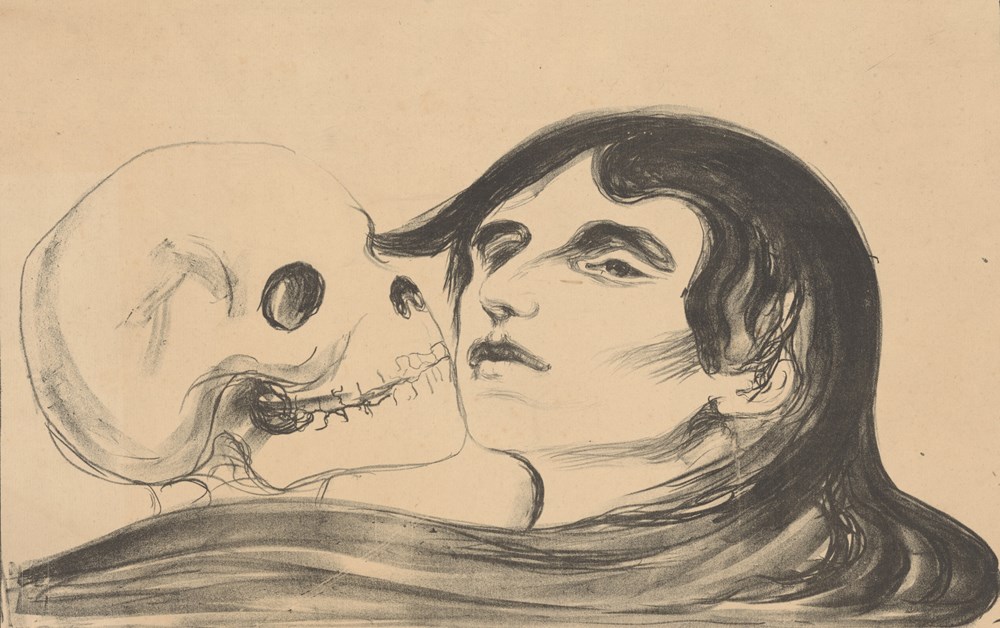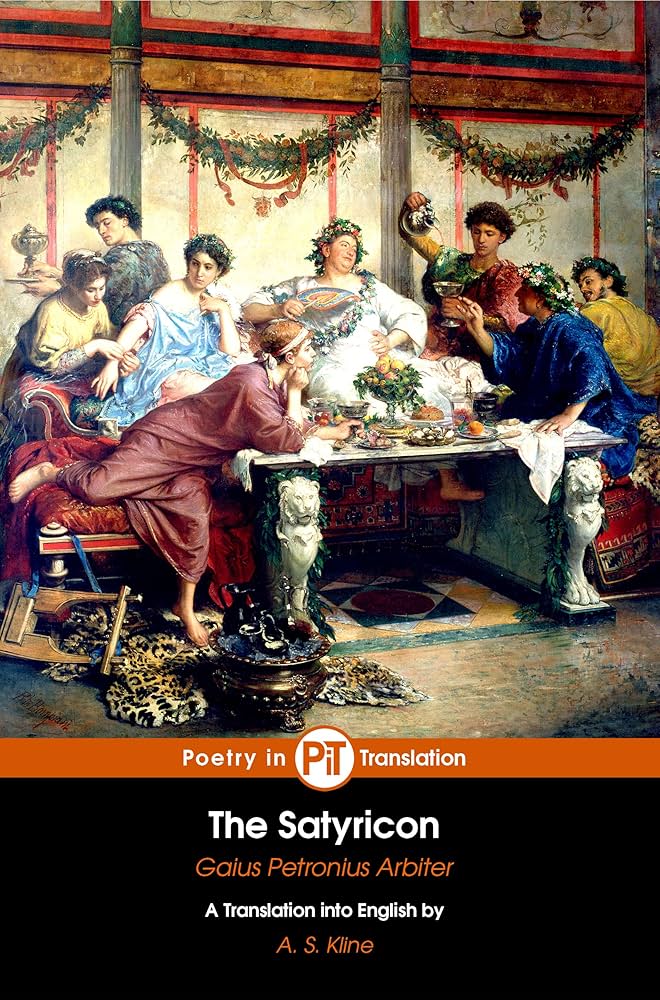Gaius Petronius Arbiter: The Enigmatic Figure of Ancient Rome
Introduction to Petronius
Gaius Petronius Arbiter, often simply referred to as Petronius, remains one of the most intriguing figures of ancient Rome. A man of many talents, he served as a courtier, a writer, and a confidant to Emperor Nero. His life, though shrouded in mystery, has been pieced together through historical accounts and his own literary works. Petronius is best known for his satirical novel, the "Satyricon," which offers a vivid and often scandalous portrayal of Roman society during the 1st century AD.
Despite his prominence in Nero's court, Petronius was not a typical politician or military leader. Instead, he was celebrated for his wit, charm, and refined taste, earning him the title of "arbiter elegantiae" or "judge of elegance." His influence extended beyond the court, as he became a symbol of the decadence and excess that characterized Nero's reign. Yet, beneath the surface of his lavish lifestyle, Petronius was a keen observer of human nature, using his literary talents to critique the moral decay of his time.
Early Life and Background
Little is known about Petronius's early life, and historians have had to rely on scattered references to piece together his background. He is believed to have been born around 27 AD, possibly in Massilia (modern-day Marseille), a city known for its cultural diversity and intellectual vibrancy. His family was likely of equestrian rank, which afforded him access to education and social mobility in Roman society.
Petronius's upbringing would have been steeped in the traditions of Roman aristocracy, with a strong emphasis on rhetoric, philosophy, and the arts. His education would have prepared him for a career in public service, but Petronius seemed more inclined toward the pleasures of life than the rigors of politics. His early years remain a subject of speculation, but it is clear that he possessed a sharp intellect and a penchant for satire, traits that would define his later works.
Rise to Prominence
Petronius's ascent to prominence began under the reign of Emperor Nero, who ruled from 54 to 68 AD. Nero, known for his artistic ambitions and erratic behavior, surrounded himself with a circle of advisors and entertainers who shared his tastes. Petronius, with his wit and sophistication, quickly became one of Nero's favorites. He was appointed to the position of consul, a high-ranking political office, though his true influence lay in his role as the emperor's arbiter of taste.
In this capacity, Petronius was responsible for organizing lavish banquets, theatrical performances, and other forms of entertainment that catered to Nero's extravagant desires. His ability to navigate the treacherous waters of court politics while maintaining his independence speaks to his cunning and adaptability. However, his close association with Nero also made him vulnerable to the emperor's unpredictable moods and the machinations of rival courtiers.
The Satyricon: A Masterpiece of Satire
Petronius's literary legacy rests primarily on the "Satyricon," a work that defies easy classification. Part novel, part satire, and part social commentary, the "Satyricon" offers a fragmented yet vivid glimpse into the lives of its characters, who navigate a world of debauchery, greed, and hypocrisy. The most famous episode, the "Cena Trimalchionis" (Dinner of Trimalchio), is a biting critique of the newly wealthy freedmen who sought to emulate the aristocracy.
The "Satyricon" is notable for its realistic dialogue, its use of colloquial Latin, and its unflinching portrayal of human foibles. Petronius's characters are not idealized figures but flawed individuals driven by base desires. Through their exploits, he exposes the moral bankruptcy of a society obsessed with wealth and status. The work's fragmented state has only added to its mystique, as scholars continue to debate its structure and intended message.
Petronius and Nero: A Complex Relationship
Petronius's relationship with Nero was one of mutual admiration and tension. As the emperor's arbiter of elegance, Petronius played a key role in shaping the cultural life of the court. His influence extended to matters of fashion, literature, and even personal conduct, as Nero sought his approval on various matters. However, Petronius's independence and sharp tongue eventually made him a target of suspicion.
The turning point came when Petronius was accused of involvement in the Pisonian conspiracy, a plot to assassinate Nero in 65 AD. Although the evidence against him was flimsy, Petronius was arrested and ordered to commit suicide. True to his character, he faced his end with stoic grace, hosting a final banquet for his friends and dictating a letter to Nero that detailed the emperor's vices. His death marked the end of an era, as Nero's reign descended into further paranoia and violence.
Legacy and Influence
Petron
The Cultural Impact of Petronius's Work
Though much of Petronius's life remains shrouded in mystery, his literary masterpiece, the Satyricon, has cemented his place in the annals of Western literature. The work’s bold, satirical take on Roman society was revolutionary for its time and continues to resonate with modern audiences. Unlike the idealized epics of Virgil or the stoic philosophy of Seneca, Petronius’s writing embraced the raw, often vulgar reality of daily life in Nero’s Rome. His sharp wit and unflinching portrayal of human vice set him apart from his contemporaries.
The Satyricon is often considered one of the earliest examples of the novel as a literary form, blending prose and poetry, comedy and tragedy, in a way that defies easy categorization. Its episodic structure and fragmented survival—only portions of the text remain—add to its enigmatic allure. Scholars have long debated whether it was intended as a mere satire of the aristocracy, a parody of epic poetry, or a subversive critique of moral decay. Regardless of interpretation, its influence can be traced in later works from Renaissance satire to modernist literature.
The "Cena Trimalchionis": A Microcosm of Roman Excess
Among the surviving fragments of the Satyricon, the most famous is undoubtedly Cena Trimalchionis ("The Dinner of Trimalchio"), an elaborate and grotesque depiction of a banquet hosted by a freedman of immense wealth. Trimalchio, the ostentatious host, embodies the nouveaux riches of Roman society—those who flaunt their wealth without refinement or taste. The scene is filled with absurdities: extravagant dishes, drunken revelry, and pretentious displays of pseudo-intellectualism.
Petronius’s portrayal of Trimalchio is both comedic and cutting. Through exaggerated details—such as dishes designed to deceive the guests (a cooked hare dressed with wings to resemble Pegasus) and Trimalchio’s clumsy attempts at philosophical discourse—the author mocks the shallow aspirations of the rising social class. Yet beneath the satire lies a deeper commentary on the instability of Roman social hierarchies and the obsession with status. The freedman’s vulgarity is a stark contrast to the fading nobility’s decaying grace, suggesting a society in transition—and decline.
Petronius’s Literary Techniques
What makes the Satyricon particularly groundbreaking is its narrative style. Unlike the polished rhetoric of Cicero or the grand epics of Homer, Petronius’s prose is conversational, filled with colloquialisms and candid dialogues that bring his characters to life. His use of various literary forms—poetry interludes, rhetorical speeches, and even riddles—creates a dynamic reading experience that feels remarkably modern.
His realism was unprecedented. The depiction of everyday speech, including slang and bawdy humor, gives the work an authenticity that contrasts sharply with the literary norms of the time. The protagonists, Encolpius and his companions, are not heroic figures but flawed, often buffoonish wanderers, making them relatable in their absurdity. This departure from idealized storytelling anticipated techniques later used by novelists like Cervantes and even postmodern writers.
Parallels with Modern Satire
Petronius’s influence extends far beyond antiquity. His blending of humor, social critique, and narrative experimentation finds echoes in works like Jonathan Swift’s Gulliver’s Travels, Voltaire’s Candide, and even contemporary satirical media. The Satyricon’s irreverent tone and critique of hypocrisy resonate in an era where satire thrives in literature, television, and digital media. His fearless mockery of authority, wealth, and social pretense feels strikingly relevant today.
Moreover, the fragmented nature of the text—readers are left to piece together missing sections—has inspired writers who play with narrative structure, from Julio Cortázar to David Foster Wallace. Petronius’s willingness to break conventions, both in form and content, makes him a precursor to literary innovation.
Petronius’s Death: The Final Act of Defiance
Petronius’s downfall came when Nero’s paranoia reached its peak. Accused of conspiring in the Pisonian plot—a questionable charge, given his apolitical reputation—he was ordered to take his own life in 66 AD. But even in death, Petronius refused to conform. Unlike Seneca, who embraced Stoic solemnity in his suicide, Petronius turned his final moments into a performance. He hosted a gathering of friends, drank wine, listened to poetry, and avoided any dramatic farewell. Then, after opening his veins, he paused to dictate a scathing letter to Nero, detailing the emperor’s depravities before sealing it and bleeding to death.
This act was the ultimate defiance: a man who had lived with wit and irony chose to die the same way. By documenting Nero’s excesses, he ensured his revenge would outlast him. The letter itself was reportedly so candid that Nero, upon reading it, was said to have suspected a spy in his inner circle, illustrating Petronius’s enduring ability to unsettle those in power.
The Enigma of Petronius’s Character
Historians and biographers have struggled to pin down Petronius’s true nature. Tacitus describes him as a man of “refined laziness,” whose days were spent sleeping and his nights in revelry—yet his literary genius contradicts this image of indolence. Was he a jaded observer of Rome’s decline, or a willing participant in its excesses?
Some argue he was a reluctant courtier, forced to navigate Nero’s tyranny while privately despising it. Others see him as a product of his time, embodying the contradictions of an empire that prized luxury yet clung to fading virtues. His deliberate self-fashioning as Nero’s “arbiter of elegance” suggests a man who understood the performative nature of power—and subverted it with every carefully placed barb in his writing.
The Rediscovery of Petronius in the Renaissance
After centuries of obscurity in the Middle Ages, Petronius’s work re-emerged during the Renaissance, when humanists sought to revive classical texts. The fragmented Satyricon was pieced together from various manuscripts, sparking both fascination and scandal among scholars. Its explicit content led to censorship, but its literary brilliance ensured its survival in private circles.
By the 17th and 18th centuries, Petronius became a cult figure among libertine writers, who admired his unapologetic portrayal of human desire. Enlightenment thinkers, meanwhile, saw in his satire a weapon against hypocrisy—a precursor to their own critiques of church and state. Today, his work is studied not just for its historical value but as a timeless exploration of societal flaws and the absurdity of human ambition.
Petronius’s Enduring Questions and Modern Interpretations
Despite the fragmentary nature of his surviving work, Petronius continues to provoke intense scholarly debate and artistic reinterpretation. The incomplete state of the Satyricon has led to countless theories about its original structure and purpose—was it meant as subversive entertainment for Nero's inner circle, or a private literary experiment? Some scholars suggest the missing portions may have contained even more radical critiques of Roman society that were deliberately suppressed. This unresolved mystery adds to the work's fascination, inviting modern readers to speculate about what might have been lost to time.
The Gender and Sexuality Debate
One particularly contentious area of Petronian scholarship concerns his treatment of gender and sexuality. The Satyricon presents a world of fluid sexual identities where traditional Roman values appear inverted or mocked. The protagonist Encolpius's impotence, the androgynous beauty of Giton, and the aggressive sexuality of female characters like Quartilla and Circe challenge conventional gender norms of antiquity. Modern queer theorists have reclaimed Petronius as an early explorer of sexual identity, while other interpretations caution against imposing contemporary perspectives on an ancient text. This ongoing dialogue demonstrates how Petronius's work remains startlingly relevant to modern discussions about sexuality and power.
Petronius in Comparative Literature
When placed alongside other Roman satirists like Juvenal and Horace, Petronius stands out for his narrative complexity and psychological depth. While traditional satire employed straightforward moralizing, Petronius created living, breathing characters whose flaws reveal deeper societal sickness. His work bridges the gap between the crude humor of early Roman comedy and the sophisticated psychological novels of later centuries. This transitional quality makes him a crucial figure in understanding the evolution of Western literature.
The Influence on Later Writers
The ripple effects of Petronius's innovation can be traced through literary history. Geoffrey Chaucer's Canterbury Tales owes much to the Satyricon's episodic structure and character-driven storytelling. François Rabelais's Gargantua and Pantagruel echoes Petronius's mixture of learning and vulgarity. In the 20th century, James Joyce acknowledged Petronius's influence on Ulysses, particularly in its stream-of-consciousness passages and irreverent take on epic conventions. Even contemporary works like Bret Easton Ellis's American Psycho draw upon Petronius's technique of using a first-person unreliable narrator to expose societal rot.
Petronius in Popular Culture
Beyond literary circles, Petronius's legacy has permeated modern media in unexpected ways. Federico Fellini's 1969 film Fellini Satyricon reimagined the ancient text through a psychedelic, surreal lens, capturing the fragmentary and dreamlike quality of the original. The film's visual excesses mirror Petronius's verbal extravagance, proving the text's adaptability across artistic mediums. References to Petronius appear in television shows like Hannibal and Rome, where his name is invoked as shorthand for decadent sophistication. His life story has inspired novels, plays, and even operas, demonstrating how this ancient figure continues to spark creative imagination.
The "Arbiter Elegantiae" as Cultural Archetype
The concept of the "arbiter of taste" that Petronius embodied has become an enduring cultural archetype. From Beau Brummell to Oscar Wilde to Andy Warhol, history has repeatedly produced figures who, like Petronius, shape cultural trends while standing slightly apart from mainstream power structures. This outsider-insider position allows them to critique society while defining its aesthetics—a duality that makes them both influential and vulnerable. In today's influencer culture, we see echoes of Petronius in certain cultural critics and fashion icons who wield significant soft power despite holding no official position.
Archaeological and Textual Discoveries
Petronian scholarship received a significant boost in 1650 with the discovery of the "Cena Trimalchionis" manuscript at Trau (now Trogir, Croatia). Subsequent discoveries, including fragments found in Egypt and potential references in newly deciphered papyri, continue to expand our understanding. Modern technologies like multispectral imaging have revealed previously unreadable sections of existing manuscripts. The ongoing hunt for lost Petronius manuscripts remains one of classical scholarship's most tantalizing quests—the literary equivalent of searching for lost imperial Roman treasures.
The Mystery of Lost Works
Ancient sources reference other works by Petronius that have not survived, including poems and possibly more extensive prose works. Some scholars theorize these lost texts might have contained political commentary too dangerous to preserve intact. The possibility that additional Petronius writings could still emerge—perhaps buried in some overlooked monastic archive or beneath volcanic ash like the Herculaneum papyri—keeps classicists hopeful. Each new archaeological breakthrough in Roman sites rekindles the possibility of uncovering more fragments of this elusive author's legacy.
Conclusion: The Timelessness of Petronian Satire
What makes Petronius endure when so many of his contemporaries faded into obscurity is his uncanny ability to capture fundamental human truths beneath the veneer of satire. His portrayal of social climbing, intellectual pretension, and the anxieties of class mobility could easily describe modern society. The dinner parties of Trimalchio have their equivalents in today's celebrity culture and social media grandstanding. The hollow rhetoric of self-made men in the Satyricon mirrors the empty promises of modern influencers and politicians.
Ultimately, Petronius leaves us with a paradox—a man who embodied Roman decadence yet exposed its emptiness, a courtier who served Nero while subtly undermining him, a writer whose fragmented work feels more complete than many perfectly preserved texts. His genius lay in understanding that sometimes the most profound truths are best delivered with a smirk, and that the sharpest critiques often come disguised as entertainment. In an age where satire continues to be both weapon and shield against power, Petronius's voice—witty, subversive, and enduringly human—still speaks to us across the centuries.






















Comments